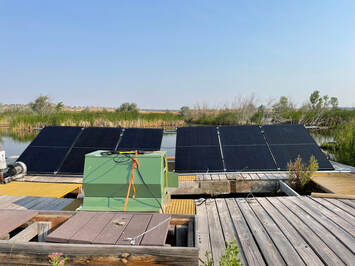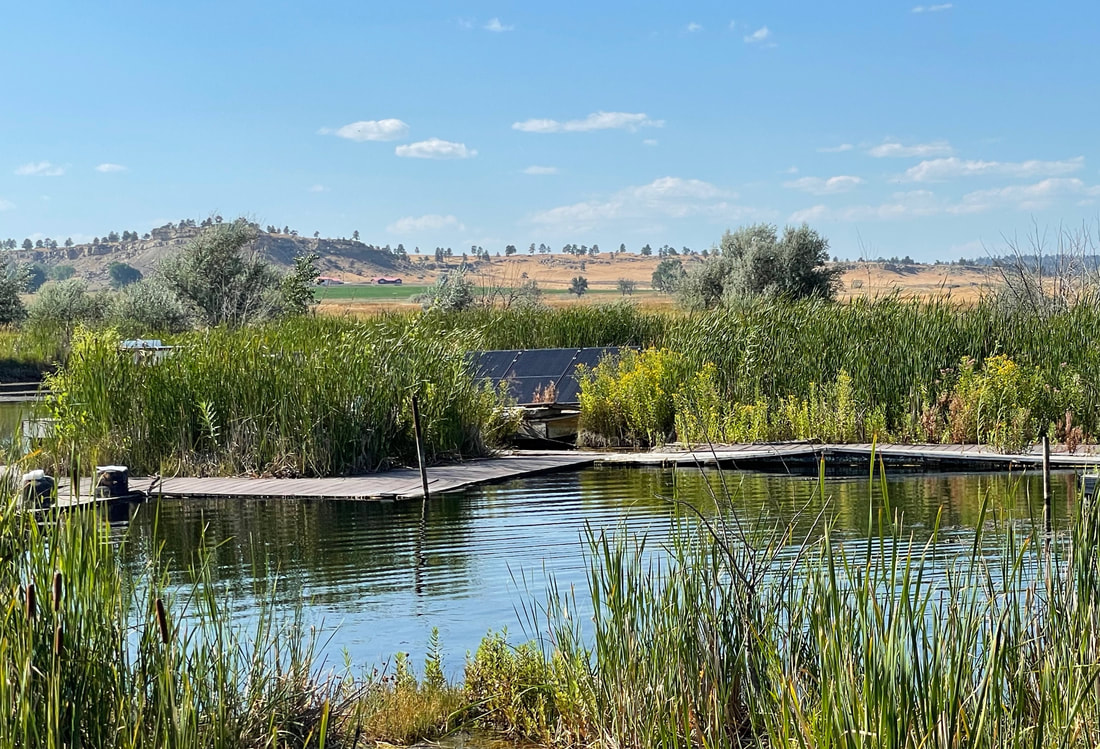They don’t need light, but instead are limited by surface area, circulation, and temperature (think climate change and how it will impact our water!) Of course, there are other factors that influence both engines. In other words, there are design opportunities. Here we are in drought-stricken Montana. No rain for four months. Then a rain event happens, and the cold, forty-something-degree rainwater hits the sixty or seventy-degree surface water of my fish pond. The rain sinks, since it is more dense than the surface water. This results in aggressive mixing of the water. The lake’s bottom water, which is nearly devoid of oxygen, is mixed with the entire inventory of water. And there’s a lot more of this low dissolved oxygen water than a couple three inches of rainfall. Low dissolved oxygen conditions result. If they are too low, fish die. It’s that simple. And water clarity is also impacted big time…as the suspended particles that were concentrated in your bottom layer of water are now dispersed across the entire lake. This turbidity reduces sunlight driven aeration. One of the engines of life, of oxygenation, is shut down for a period. Basic stewardship of fish…for bass, keep your levels above 4 parts per million. For fathead minnows, keep your levels above 2 parts per million. For trout, stay above 6 parts per million…and “good luck” with that, under eutrophic conditions! These conditions are exacerbated by the hottest July ever! Climate change is real enough to kill your fish, unless you design around it. Our late summer rain event spells death for our lake unless we have prepared. Imagine five and six pound bass belly up! And thousands of panfish! My six-pound bass here in Montana equate to your double-digit bass in Texas. Way too valuable to lose! Vertical aerators are a partial answer. But unless they mix the entire waterway, they aren’t enough. Natural aeration helps, when and where it’s ample. But in the meantime, a simple rain event can decimate your fishery. So what to do? You may have protected zones within your waterway…places where particularly beneficial aquatic vegetation occurs. Think Lintella in acidic water, or Chara in higher pH settings. Beneficials like these may save your lake. There are others too…perennial aquatic vegetation that produces a net positive of oxygen in your water. We are experimenting with nanobubbles. They may represent a means by which to aerate across an entire waterway, and even into the sludge that inexorably accumulates under anoxic conditions. You may have heard our tag line …”grow fish instead of algae!” Well, nanobubbles may be the breakthrough that truly provides for this! Late summer conditions can be particularly stressful for your fish. Just remember…you can design to optimize both engines of life. Track what limits them – what they need more of to survive. Then design to prevent dire shortages. Sustain your fish. Don’t allow them to suffocate. Take ubiquitous excess nutrients and cycle them into your fish by maintaining ample dissolved oxygen.
1 Comment
5/2/2024 11:05:26 pm
Super interesting article, very enjoyable!
Reply
Leave a Reply. |
AuthorWrite something about yourself. No need to be fancy, just an overview. Archives
August 2023
Categories
All
|


 RSS Feed
RSS Feed